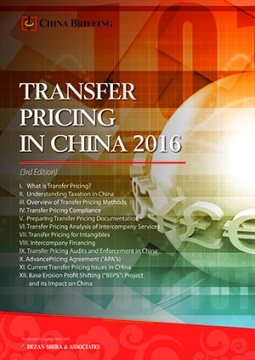Local Tax Bureaus Receive Guidelines for Transfer Pricing Reviews
Aug. 3 – The State Administration of Taxation continues to strengthen its transfer pricing oversight, releasing guidelines last month on how local tax bureaus are to review extemporaneous documentation.
Released on July 12, Guoshuihan [2010] No. 323 specifically lays out the SAT’s expectations for local tax bureaus, instructing them to put together a list of taxpayers required to prepare contemporaneous documentation, create a list of the names of companies whose documents have been reviewed, and comment on the quality and completeness of the reviewed reports.
The local tax bureau will be required to review no less than 10 percent of all annual reports prepared by taxpayers in their jurisdiction and will choose their review targets based on the following criteria:
- Related-party sale and purchase transactions exceed RMB200 million
- Other related-party transactions, such as licensing services and financial interest, exceed RMB40 million
- Single-function entities operating at a loss
- Companies in the post-audit follow-up period
- Companies with thin capitalization
- Companies with cost-sharing agreements
- Other conditions as determined by the SAT
The circular specifies that local tax bureaus must confirm the following information is contained within a company’s contemporaneous documentation:
- Organizational structure
- Industry analysis
- Related party transaction analysis
- Economic analysis
- Transfer pricing method
The tax bureau will review the documentation and rate it as “good,” “average,” “poor,” or incomplete.”
The local tax bureaus have to submit their review of documentation reports covering the fiscal years ending in December 2008 and 2009 to the SAT by October 31, 2010.
For more information or advice with transfer pricing documentation, please contact Dezan Shira & Associates at tax@dezshira.com.
![]()
 Transfer Pricing in China 2016
Transfer Pricing in China 2016
Transfer Pricing in China 2016, written by Sowmya Varadharajan in collaboration with Dezan Shira & Associates and Asia Briefing, explains how transfer pricing functions in China. It examines the various transfer pricing methods that are available to foreign companies operating in the country, highlights key compliance issues, and details transfer pricing problems that arise from intercompany services, intercompany royalties and intercompany financing.
 Annual Audit and Compliance in China 2016
Annual Audit and Compliance in China 2016
In this issue of China Briefing, we provide a comprehensive analysis of the various annual compliance procedures that foreign invested enterprises in China will have to follow, including wholly-foreign owned enterprises, joint ventures, foreign-invested commercial enterprises, and representative offices. We include a step-by-step guide to these procedures, list out the annual compliance timeline, detail the latest changes to China’s standards, and finally explain why China’s audit should be started as early as possible.
Managing Your Accounting and Bookkeeping in China
In this issue of China Briefing, we discuss the difference between the International Financial Reporting Standards, and the accounting standards mandated by China’s Ministry of Finance. We also pay special attention to the role of foreign currency in accounting, both in remitting funds, and conversion. In an interview with Jenny Liao, Dezan Shira & Associates’ Senior Manager of Corporate Accounting Services in Shanghai, we outline some of the pros and cons of outsourcing one’s accounting function.
- Previous Article SAFE Adjusts Management Approach of Mainland Institutions
- Next Article Qingdao Tax Bureau Releases New Notice on Corporate Income Tax










